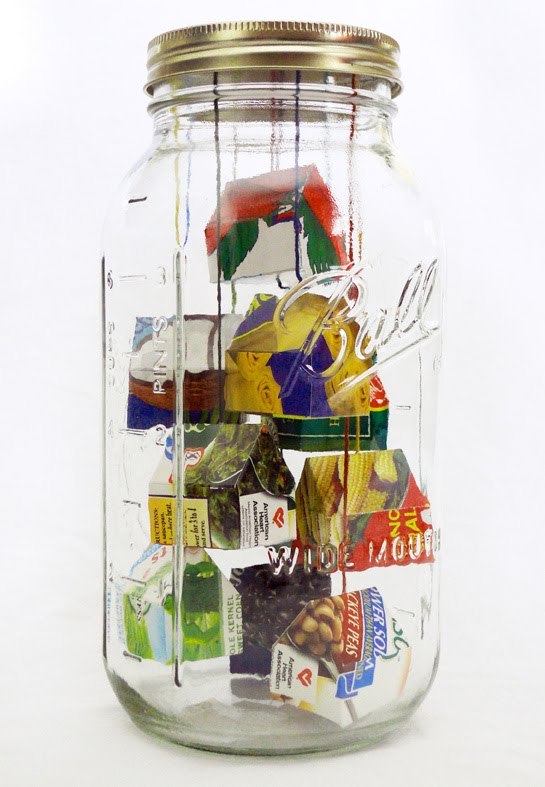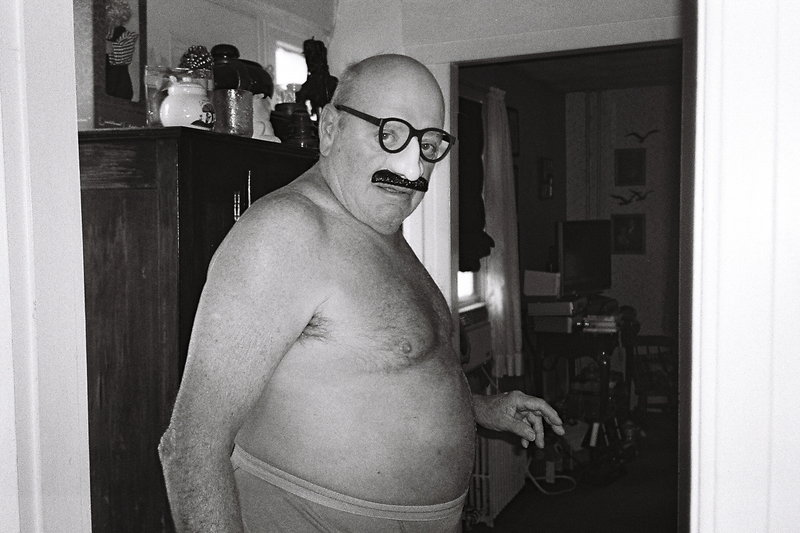Sculptors are the heroes of the arts. They are the least appreciated, the greatest riskers of time, the most restricted in expression and the most poorly rewarded of artists. Their perseverance is an act of defiance, whether or not they see it as such. To produce an object that manipulates space, dances with the light, honors the substance from which it is made and avoids the mundane is a small miracle.
A show at the Addison Woolley Gallery provokes these thoughts. It is called “Quartet,” and among the work presented are three sculptures by Susan Bennett. All of the pieces are accomplished in stainless steel, and are small scale.
Size is a consideration in sculpture — it can lend consequence to a piece; it can also dismiss it to a bookshelf. To produce a piece say, 15 inches high, with sufficient stature to command an independent position in space is an accomplishment.
I have in mind Bennett’s “Ice Cube Series #6.” It is a construction with Cubist roots, architectural references and monumental intentions. There is an intensity that would survive great enlargement.
I have a particular fondness for stainless steel. As an industrial material, it does not have the cachet of bronze or marble. When given a subdued patina as in the Bennett piece, it may overcome the inference of inferior material and convince the viewer of its integrity. It does it through a subtle surface mellowness. Bennett is so successful at it that it would be difficult to think of her pieces with any other surface.
The principal artist in “Quartet” is Arunas Bukauskas, a highly regarded photographer. In this show, he is represented by a dozen portraits in black and white.
There is a classic ingredient to Bukauskas’ images. It has come down to us over the decades from photographers as an implacable stillness, a golden pause in their work. Bukauskas is a master of the moment in which the sitter waives his defenses and invites the camera to wander in the regions of his personality. It is an instantaneous adventure, but the image that is extracted can be timeless.
The consistency of Bukauskas’ perception is a unifying component in these works. In these gorgeous images, he has assembled a catalog of human reflection that will touch your heart.
Melonie Bennett and Barbara Goodbody complete the foursome. Bennett continues to provide black-and-white images of the antics and sometimes quiet moments in the lives of people. Certain of Goodbody’s beautiful color photographs of natural phenomena — e.g., sunrise — have a voluptuousness that is unanticipated. Others reduce those visual events into strict but rich abstraction.
Bennett is a well-known black-and-white photographer. Her work is a blend of documentation, amusement and intrusion. Her subject appears to be her family, a clan that she catches at odd times, some of which can make us uncomfortable. To what extent her subjects play to the camera I cannot say, and I accept the fact her presence in a room can be so usual that she evaporates.
Still, there is a sense they are there for a purpose. This moves the work from life events toward performance. We’re amused and sometimes a little perplexed by what we see — say, a man aping a pole dancer with a professional roadhouse dancer in the background. It’s good theater, but shy on spontaneity. And it can be a little prying when it gets close to basics. The latter is not necessarily a shortcoming; prying is fine if it’s not by invitation.
Having said all this, her images in “Dad at Home, Post Operation, 2010” and “Dad’s First Shower, Post Operation, 2010” are deeply compelling. In them, spontaneity is not a consideration; in them a story moves the images. They are splendid.
A JARRING UNIQUENESS
And now for something completely different. It’s about a show that was and will continue to be. It’s called “The Jar Project” and its locus is what, after the end of this month, is the former Whitney Art Works premises on Congress Street.
It is scheduled to coincide with First Fridays and First Saturdays. The first showing was in February, the next will be on March 4 and 5, and the final will be on April 1 and 2. That’s it; a six-day show apportioned over three months.
It’s a clever concept and intriguing as an ephemerality that will twice renew itself. Some insects do something like that and the relationship in this show between insects, ephemerality and art is apt.
The show can be described as “60 Artist Jars.” Briefly, 60 artists have encased small works in glass jars and put them on exhibit. These are not ship-in-a-bottle creations; they are provocative and often complex works of art.
The intention is to remind us of pre-technological times and the beauty and piquancy inherent in such everyday processes as canning. There are deeper philosophic connotations, but I limit myself to the easy step from peaches and pickles to pictures and paintings.
The bottled items include carvings, photographs, sculpture in various guises, drawings, collages, lithographs, labels, crayons and painted shells. You get the idea. It is immensely fascinating.
I began by mentioning insects. The lining of shelves with these occupied jars is more reminding of specimen jars than it is of preserved foods. And specimen jars harboring insects, tiny animals, mineral and botanic material and all manner of natural exotica were vigorous interests in the 16th through 18th centuries.
Rooms of jarred objects were called Wunderkammers (chambers of wonders), and Wunderkammers as a concept invite me to roam with them. Their allure is in the intensity of their acquisition and the seriousness of their scrutiny of the world around us and how we fit into the picture.
I saw this unique, time-consuming show in its first two days, and will see it in at least one of its remaining four.
Philip Isaacson of Lewiston has been writing about the arts for the Maine Sunday Telegram for 45 years. He can be contacted at:
pmisaacson@isaacsonraymond.com
Send questions/comments to the editors.




Success. Please wait for the page to reload. If the page does not reload within 5 seconds, please refresh the page.
Enter your email and password to access comments.
Hi, to comment on stories you must . This profile is in addition to your subscription and website login.
Already have a commenting profile? .
Invalid username/password.
Please check your email to confirm and complete your registration.
Only subscribers are eligible to post comments. Please subscribe or login first for digital access. Here’s why.
Use the form below to reset your password. When you've submitted your account email, we will send an email with a reset code.